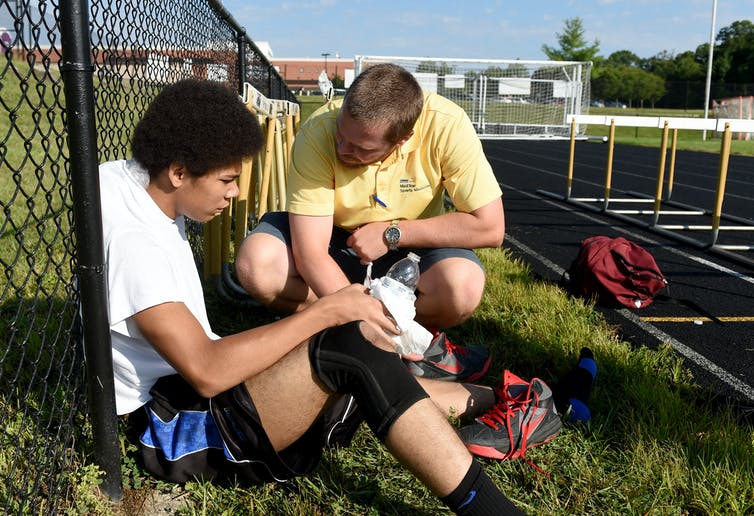At least 50 high school football players in the U.S. have died from heat stroke after falling ill on the field in the past 25 years. And high school athletes in other sports are not immune from the risks – female cross-country athletes are twice as likely to suffer from heat-related illnesses as athletes in any other high school sport.
The numbers are especially shocking when you consider that heat-related illnesses and deaths are entirely preventable.
While sports equipment has improved over time to protect against concussions, young players and college athletes are facing increasing risks from rising heat.
We study sport ecology and legal aspects of sport. With summer temperatures rising, we believe many youth sports leagues and school districts will need to aggressively update their practice rules and heat policies to keep their players safe. We suggest particular attention be paid to low-income, minority neighborhoods and regions that can get excessively hot.
Heat risks in youth sports
Each year, summer marks the return of discussions of just how severe the sweltering heat is. Nine of the 10 hottest years on record globally have been since 2012, and this year’s late-spring and early-summer heat waves were previews for what forecasters warned would be a brutal summer of 2022.
Yet many interscholastic and preparatory sport summer camps have kids running hard through the summer months, sometimes on days that reach triple-digit temperatures.
In a period of rapid climate change, ensuring heat risks remain preventable is critical.

An athletic trainer helps a teenage football player who had trouble after running during August training at a Maryland high school.
Jonathan Newton / The Washington Post via Getty Images
Heat is the most frequent climate-related killer in the United States, with more deaths associated with it than tornadoes, floods and cold temperatures. And days of extreme heat and humidity are now surpassing concerning levels for human health. Overall, the Centers for Disease Control and Prevention reported an average of more than 700 heat-related U.S. deaths each year between 2004 and 2018. Some of the hottest years ever recorded have happened since then, and preliminary data detailing heat deaths in the U.S. indicates the rate increased 56% from 2018 to 2021.
Extreme heat due to climate change is making sport participation progressively challenging.
For high school athletes, the prevalence of extreme heat is leading to escalating heat-related illness, injuries, hospitalizations and deaths. In fact, heat stroke is a leading cause of death in sports.
Unsurprisingly, the greatest concentration of heat illness in young athletes occurs in August: the back-to-school and back-to-sports season.
When heat risks trigger lawsuits
Recognizing the warning signs can be especially challenging for children and teens. Young people are still learning how to communicate their feelings and…